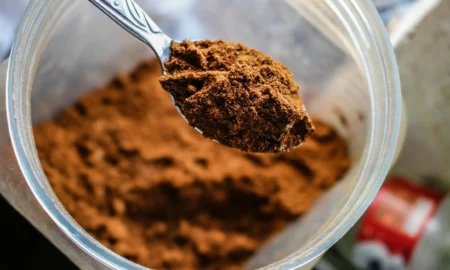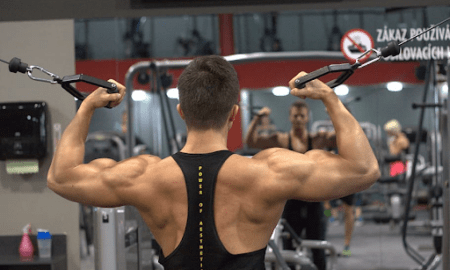Q: I’m a senior at Ohio Northern University. My major is sport management, and I’m 22 years old. Last summer I interned as a personal trainer at a health club in Columbus, Ohio—my best work experience so far. I’ve been an athlete my entire life and was recruited to play baseball in college, and I’ve really become serious about lifting and dieting. At 18, I weighed 165 pounds at 6’. Today I’m at 220 and 6’2”, and I’m proud to say that the weight gain has all come just with hard work, planned training and clean nutrition. This year I’ve really connected with natural bodybuilding. I’ve been all over your Web site and routinely read your column. Your information has been very helpful and inspiring, and I feel that I have the work ethic and natural genetic build to compete. How would I go about getting started in natural bodybuilding? I need some tips for dieting right and keeping lean. Plus, what’s your ideal program for gaining lean muscle over time?
A: Congratulations on the improvements you’ve made to your physique over the past four years. Adding 55 pounds of mostly lean muscle is a great achievement. You’ve asked for the ideal program for gaining lean muscle over time. I’d say you probably have a pretty good idea of how to do that.
The key to getting big is to overload the muscles progressively by using the basic exercises for a limited number of repetitions—six to 10—and a moderate number of sets. At the same time you need to feed the muscles by eating enough calories with the proper amounts of protein, carbohydrate and fat.
The basic exercises involve several muscle groups and are the best for building mass and strength because you can get at more muscle fibers. Exercises like squats, deadlifts, bench presses, incline presses, barbell rows, stiff-legged deadlifts, power cleans and military presses all use the biggest muscle groups, which is critical for building muscle mass.
I recommend a high-protein diet. Limit your carbohydrates to high-fiber, low-glycemic-index foods like oatmeal, brown rice, sweet potatoes, whole-grain bread and vegetables. You’ll have to experiment to figure out the right amount for adding muscle without getting too fat. It’s difficult to stay very lean while building muscle because you need to eat extra calories. That’s particularly true if you have a fast metabolism and you’re naturally thin.
I suggest eating the majority of your carbohydrates earlier in the day. You could include more with breakfast and lunch and cut back on them toward the end of the day.
You should also eat carbs both before and after your workouts. About an hour before you train, you should eat a low-glycemic-index carbohydrate like oatmeal so you have plenty of energy to sustain you for the full session. A simple carb like fruit or fruit juice will be in and out of your system too quickly to give you the energy you need to train hard.
Immediately after your workout take advantage of the window of opportunity to restore the carbohydrate in your muscle cells by having a fast-acting recovery drink like 2:1:1 Recovery by Optimum Nutrition or RecoverX by Muscle-Link. They’re specifically designed to maximize muscle recuperation by providing quick-digesting whey protein with the right amount of carbohydrate for rapid absorption into your muscle cells.
You asked how to get started in natural bodybuilding. I assume you mean getting started in competition. Begin by entering a local natural contest in your area. Pick a show that’s at least three to four months away so you’ll have plenty of time to prepare.
Diet is the most critical area of contest preparation. Your nutrition plan should enable you to eliminate bodyfat while maintaining muscle mass. That will give you the ripped look that wins competitions. If you’re not lean and conditioned, you have little or no chance of winning.
You also need to hit the poses correctly to properly showcase your physique. The judges will judge only what they see. If you don’t show your physique off to its best advantage, you’re only hurting yourself. My book Natural Bodybuilding has a whole section devoted to contest preparation, including how to develop a posing routine and the proper way to execute the poses. Also, my new DVD, “Natural Bodybuilding Seminar and Competitions,” features a full section on competing, with prejudging, evening show and posedown footage from contests I’ve entered. You’ll gain valuable insight from either of those sources.
Q: How do you feel about spreading a muscle group’s total workload over two to three weekly sessions instead of doing it on one day? For example, instead of six sets for a bodypart once a week, how about three sets twice week? Or instead of 12 sets for a bodypart once a week, how about four sets done three times per week?
A: I understand what you’re saying, but muscle growth doesn’t really work like that. In order to get a muscle to respond and grow, you have to progressively increase the intensity so it keeps adapting to the new stress. If you train a muscle with only half the intensity or volume you previously used, it won’t grow.
You can work a muscle more often if you don’t train it as intensely. When people first start working out, their muscles respond to almost any type of resistance exercise. Even two to three sets with a moderate resistance will make muscles grow. Because the intensity and volume are so low, the muscles recuperate quickly—in two to three days—and the same workout can be repeated several days per week.
As the muscles adapt by getting bigger and stronger, the training intensity must increase in order for them to continue growing. You can use more resistance (heavier weights), more volume (more sets and exercises) or both.
Most advanced trainees work each muscle group once or twice a week. Many older trainees limit their workouts to working each bodypart once a week so their joints and tendons fully recuperate. Younger trainees who recuperate much more quickly and don’t have joint problems can train each muscle group more often—twice a week or once every four or five days.
Bodybuilders who use anabolic steroids and other drugs can train more often because the drugs aid the recuperation process and prevent the catabolism of the muscles and joints. Many train six days a week, sometimes twice a day. Their programs hit each muscle group two to three times a week. A natural, drug-free bodybuilder would quickly overtrain on that kind of program.
I’ve been training every muscle group once a week for the past several years. That gives me three rest days a week. My joints and muscles are fully recovered before I train each muscle group again. Using that rotation, I can progressively increase the resistance and the intensity at each workout each week for a seven-to-eight-week cycle. At the end of each cycle I cut back on intensity by training lighter, or I take a full week off.
On occasion I’ve used two workouts a week for a muscle group that I wanted to specialize on. I train it heavy with my normal workout one day and then add a second, “pump” workout three to four days later. Here’s an example of how I did two workouts for my legs:
Heavy
Leg extensions 3 x 15, 12, 10
Squats 4 x 10, 8, 6, 6
Hack squats 3 x 10, 8, 6
Leg curls 4 x 10, 8, 6, 6
Stiff-legged deadlifts 3 x 10, 8, 6
Pump
Leg extensions 3 x 20, 15, 15
Superset
Leg presses 3 x 15
Sissy squats 3 x 10-12
Dumbbell lunges 2-3 x 12
The pump workout doesn’t tear down as much muscle tissue or stress the joints as much as the heavy one, but it pumps up the muscles and works different areas to provide a fuller, more developed look to the entire muscle group.
Editor’s note: John Hansen has won the Mr. Natural Olympia and is a two-time Natural Mr. Universe winner. Check out his Web site at www.NaturalOlympia.com or send questions or comments to him via e-mail at John@NaturalOlympia.com. Look for his new DVD, “Natural Bodybuilding Seminar and Competitions,” along with his book, Natural Bodybuilding, and training DVD, “Real Muscle,” at his Web site or at Home Gym Warehouse, www.Home-Gym.com. Send written correspondence to John Hansen, P.O. Box 3003, Darien, IL 60561. IM




















You must be logged in to post a comment Login